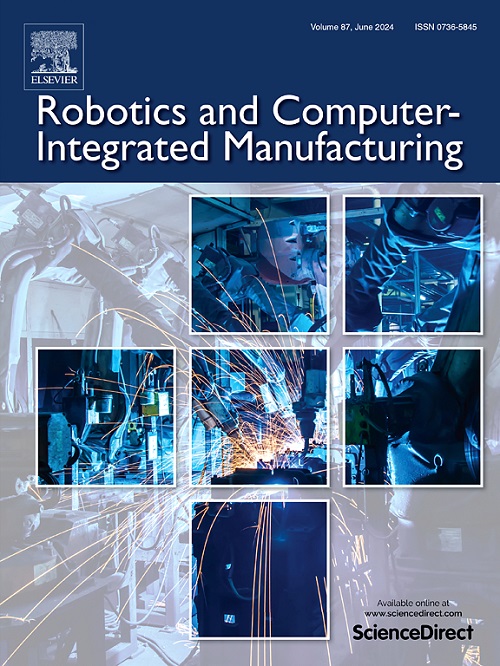通过变形建模和误差补偿,利用exexhon X-mini PKM进行加工过程的几何质量预测
IF 11.4
1区 计算机科学
Q1 COMPUTER SCIENCE, INTERDISCIPLINARY APPLICATIONS
引用次数: 0
摘要
并联机床(PKMs)提供增强的运动动力学和灵活性,弥合传统数控机床和工业机器人之间的差距。刚度是加工精度的一个关键决定因素,通常在建模时很少考虑重力效应,导致预测精度降低。本文介绍了一种新的刚度建模方法,该方法将无重力理论模型和基于重力的参数优化结合起来,通过实验分析。进行了全面的刚度测量,以隔离重力对机器结构的影响,从而对理论模型进行精确校准,以实现准确的刚度预测。使用优化模型对X- mini机床进行的六维刚度分析表明,预测精度得到了提高,在X、Y和Z方向上的误差分别减少了14%、21%和8%。利用预测的刚度和估计的切削力来计算工作空间变形,然后通过修改槽铣削时的切削深度来补偿工作空间变形。实验验证了该方法的有效性,实现了6-9µm的加工形状误差预测精度。该方法可以很好地应用于机器人和机床加工零件的形状质量预测。本文章由计算机程序翻译,如有差异,请以英文原文为准。
Geometrical quality prediction of machining process by Exechon X-mini PKM through deformation modelling and error compensation
Parallel Kinematic Machines (PKMs) offer enhanced motion dynamics and flexibility, bridging the gap between conventional CNC machines and industrial robots. Stiffness, a key determinant of machining accuracy, is often modelled with limited consideration of gravitational effects, leading to reduced predictive accuracy. This paper introduces a novel stiffness modelling approach that integrates a theoretical model without gravity and gravity-based parameter optimisation through experimental analysis. Comprehensive stiffness measurements were conducted to isolate gravitational effects on the machine structure, enabling precise calibration of the theoretical model for accurate stiffness prediction. A six-dimensional stiffness analysis of the X-Mini machine tool using the optimised model demonstrated improved prediction accuracy, reducing errors by 14 %, 21 %, and 8 % in the X, Y and Z directions, respectively. Predicted stiffness and estimated cutting forces were used to compute workspace deformations, which were then compensated by modifying the depth of cut in slot milling. Experimental validation demonstrated the method’s effectiveness, achieving a machined shape error prediction accuracy of 6–9 µm. This approach can be well applied to shape quality prediction of machined parts by robots and machine tools.
求助全文
通过发布文献求助,成功后即可免费获取论文全文。
去求助
来源期刊
CiteScore
24.10
自引率
13.50%
发文量
160
审稿时长
50 days
期刊介绍:
The journal, Robotics and Computer-Integrated Manufacturing, focuses on sharing research applications that contribute to the development of new or enhanced robotics, manufacturing technologies, and innovative manufacturing strategies that are relevant to industry. Papers that combine theory and experimental validation are preferred, while review papers on current robotics and manufacturing issues are also considered. However, papers on traditional machining processes, modeling and simulation, supply chain management, and resource optimization are generally not within the scope of the journal, as there are more appropriate journals for these topics. Similarly, papers that are overly theoretical or mathematical will be directed to other suitable journals. The journal welcomes original papers in areas such as industrial robotics, human-robot collaboration in manufacturing, cloud-based manufacturing, cyber-physical production systems, big data analytics in manufacturing, smart mechatronics, machine learning, adaptive and sustainable manufacturing, and other fields involving unique manufacturing technologies.

 求助内容:
求助内容: 应助结果提醒方式:
应助结果提醒方式:


